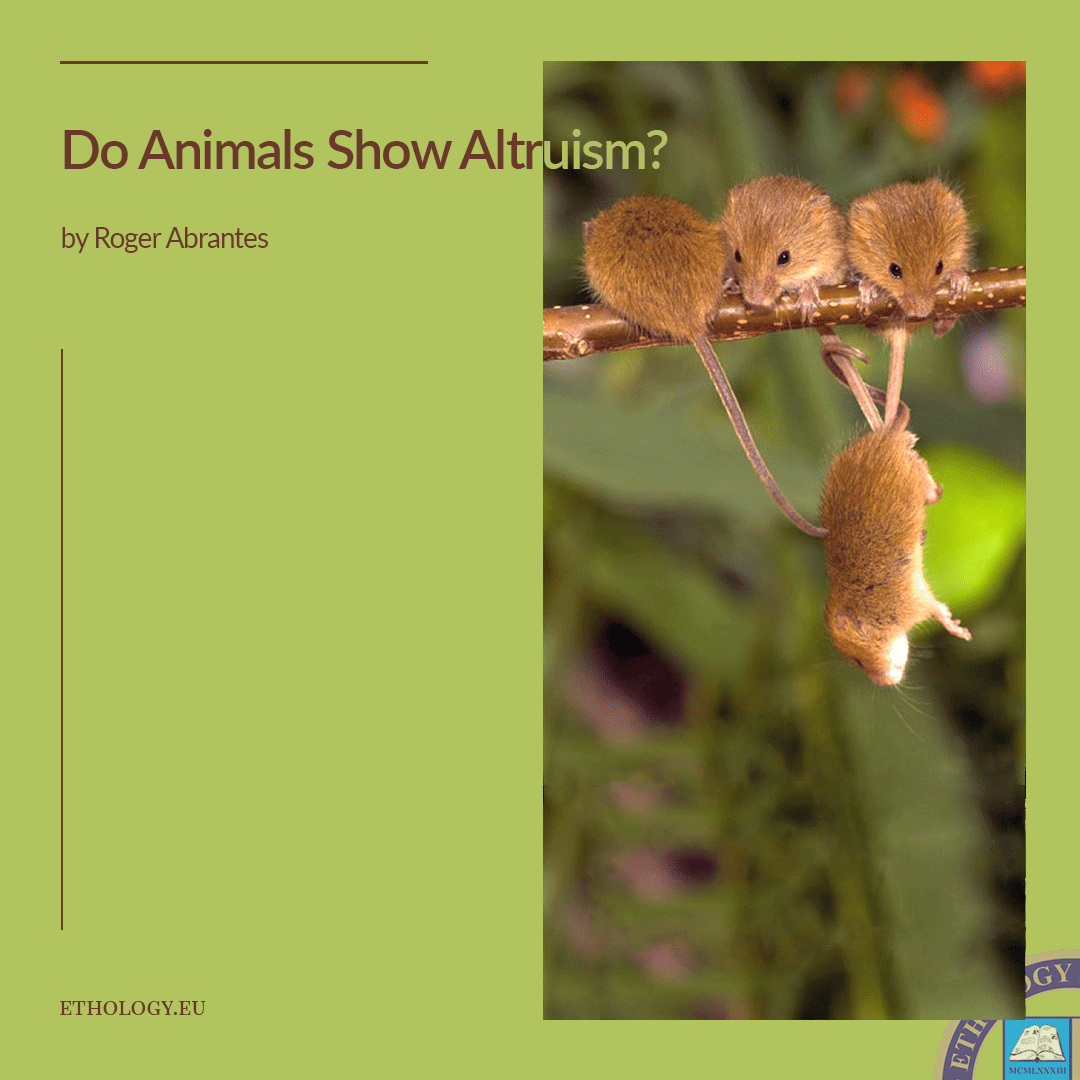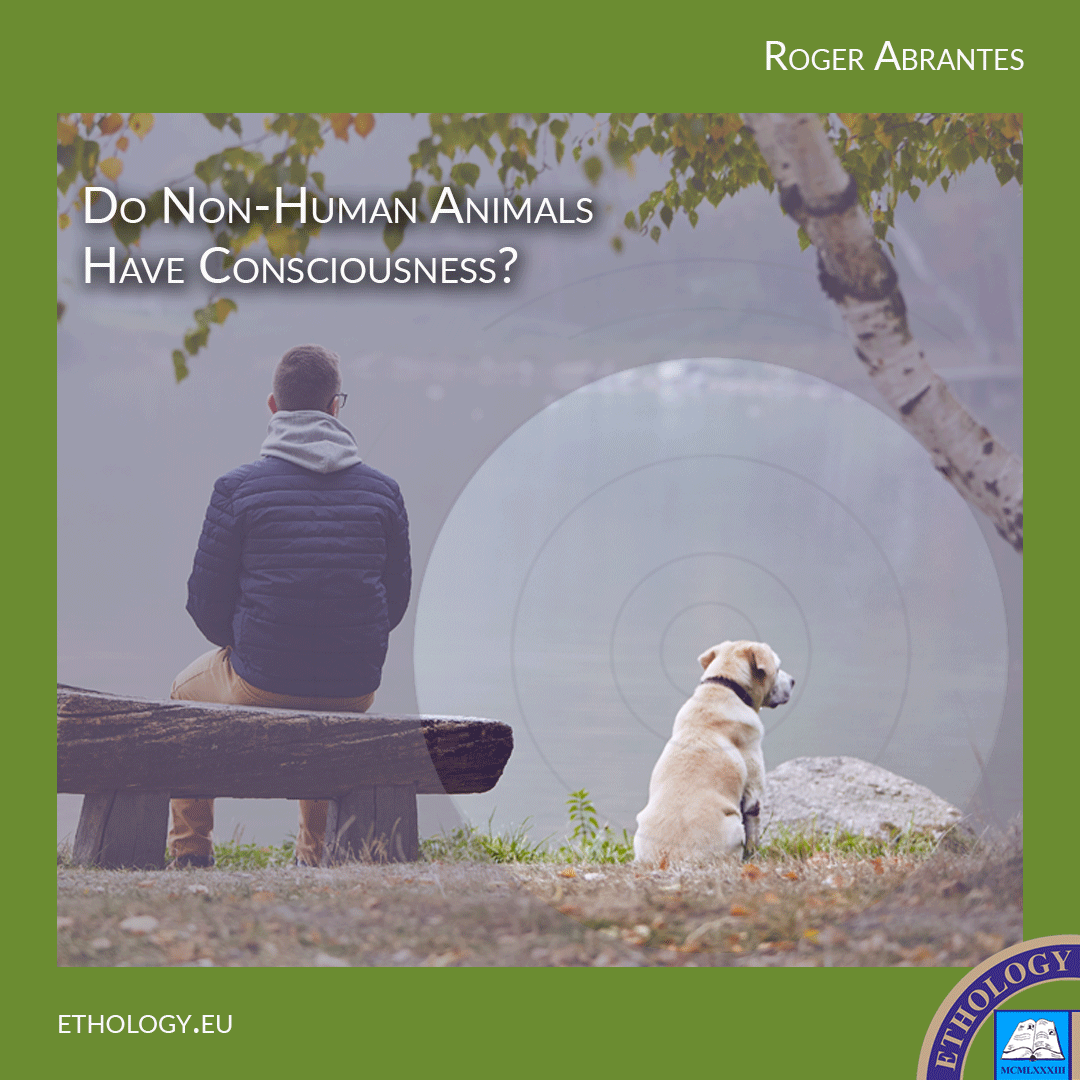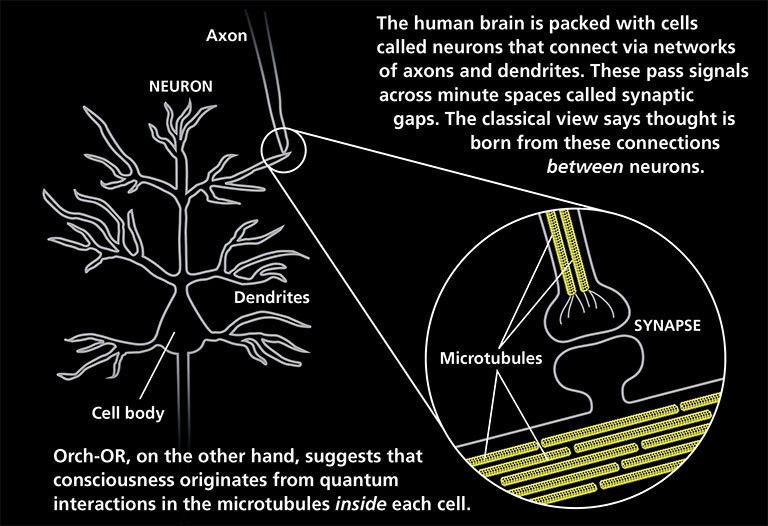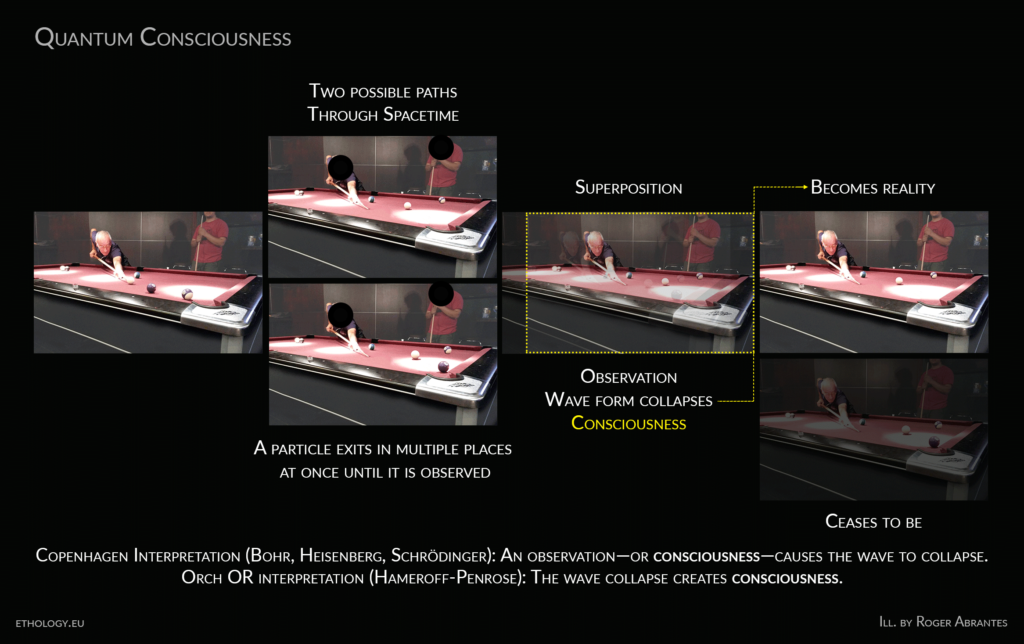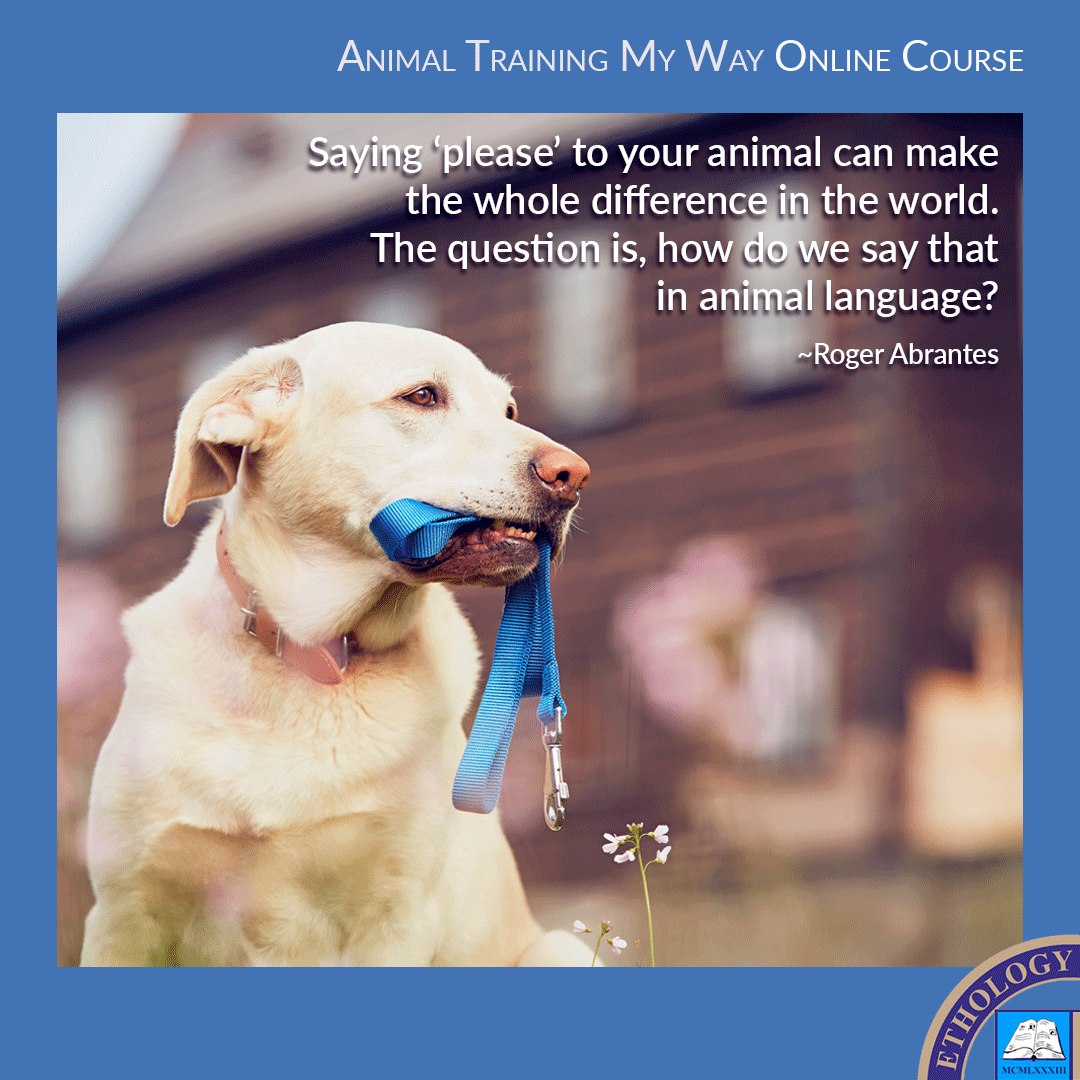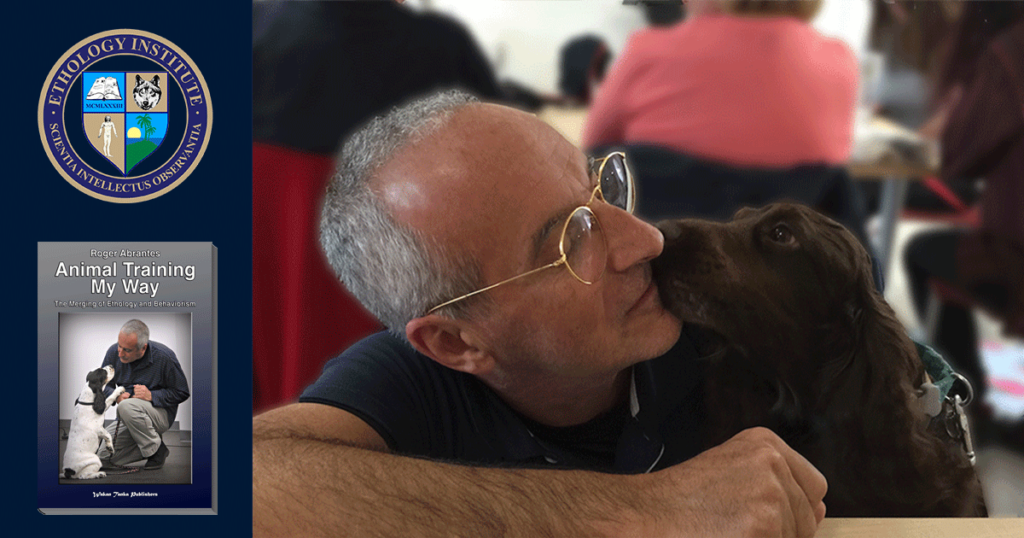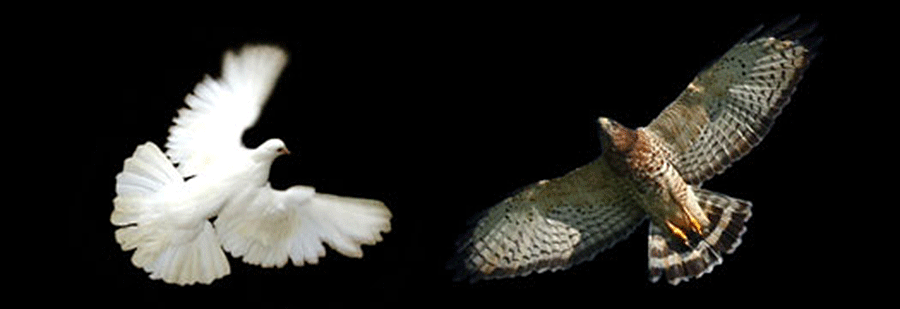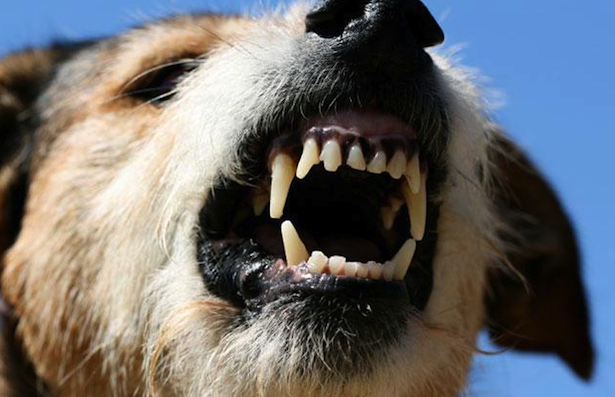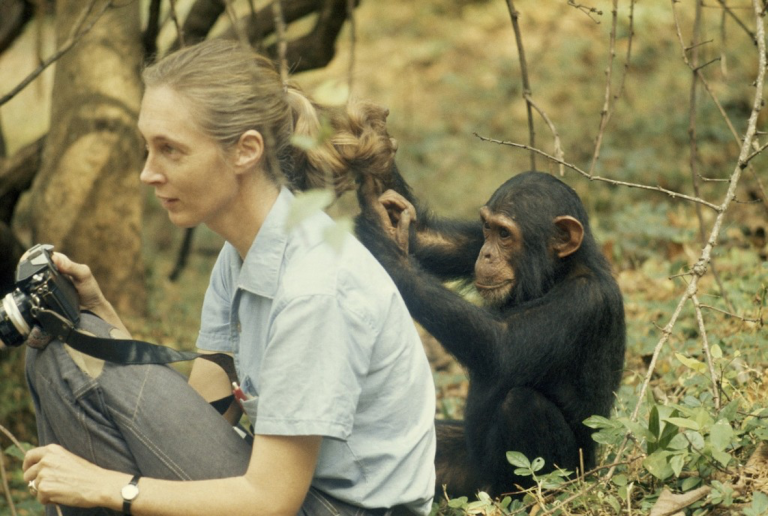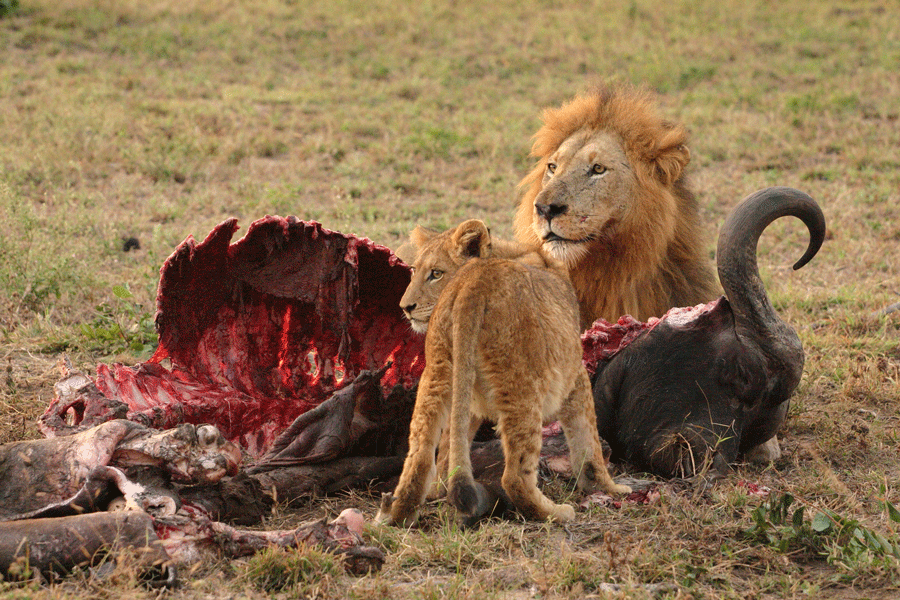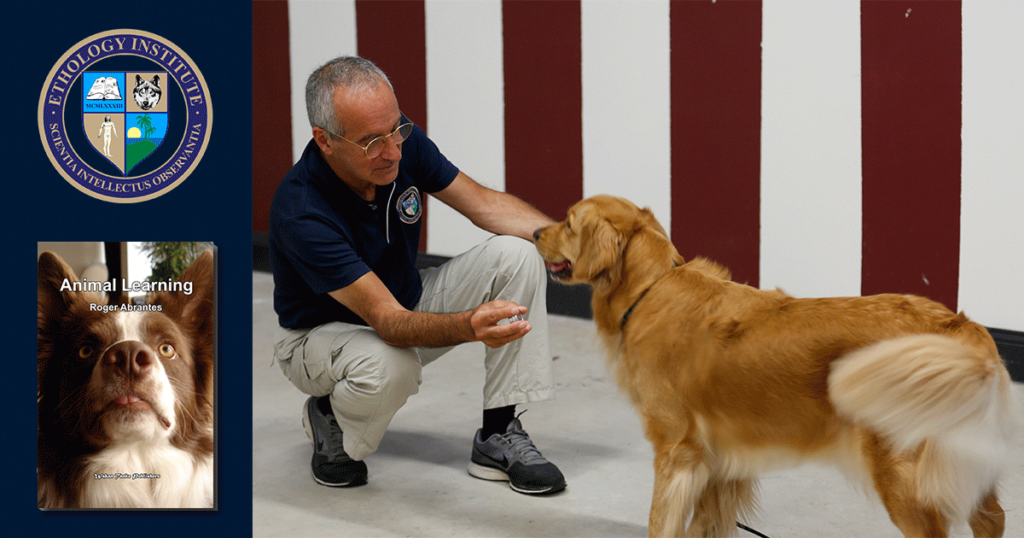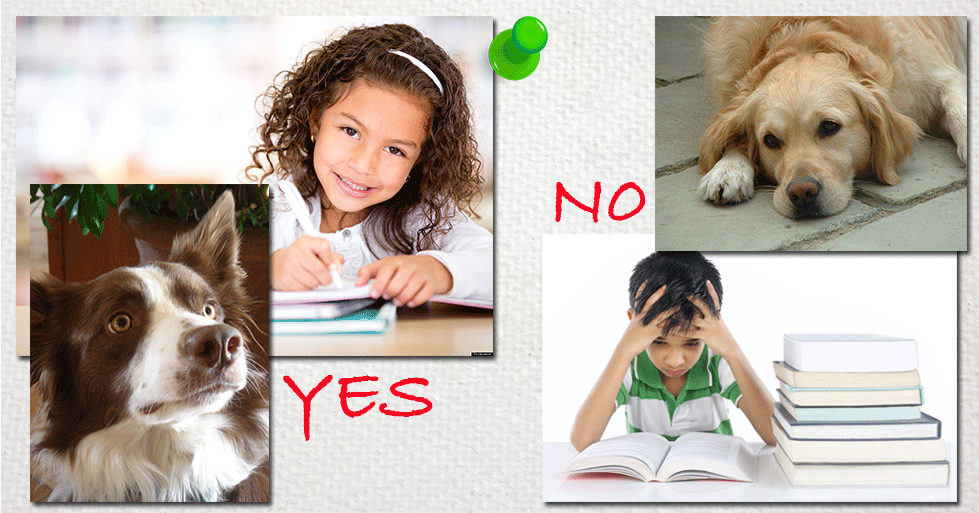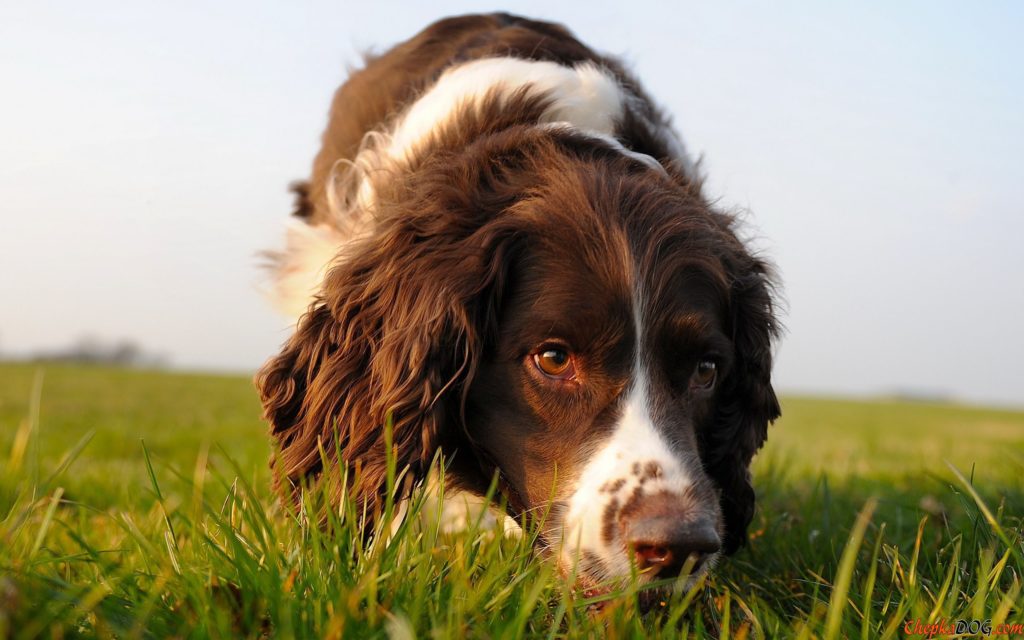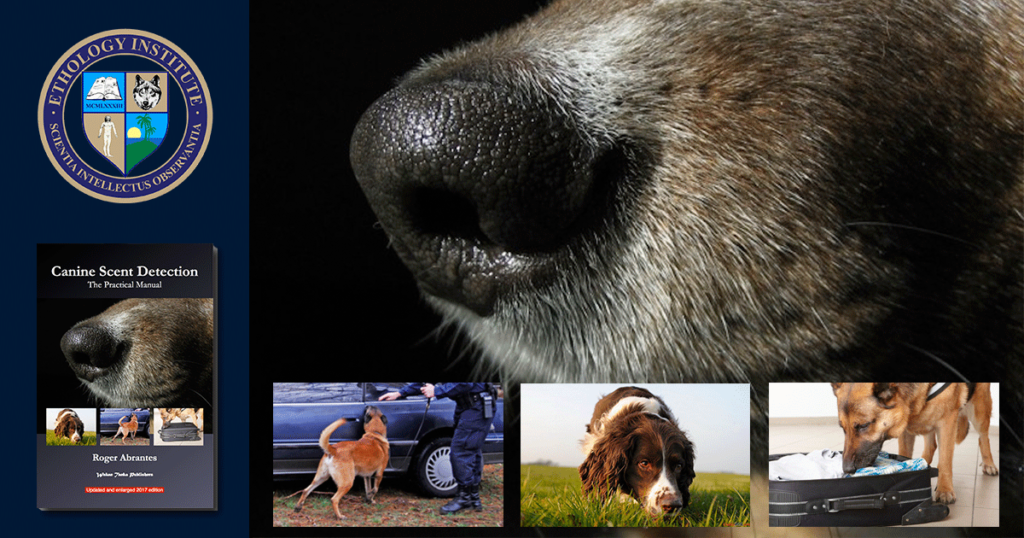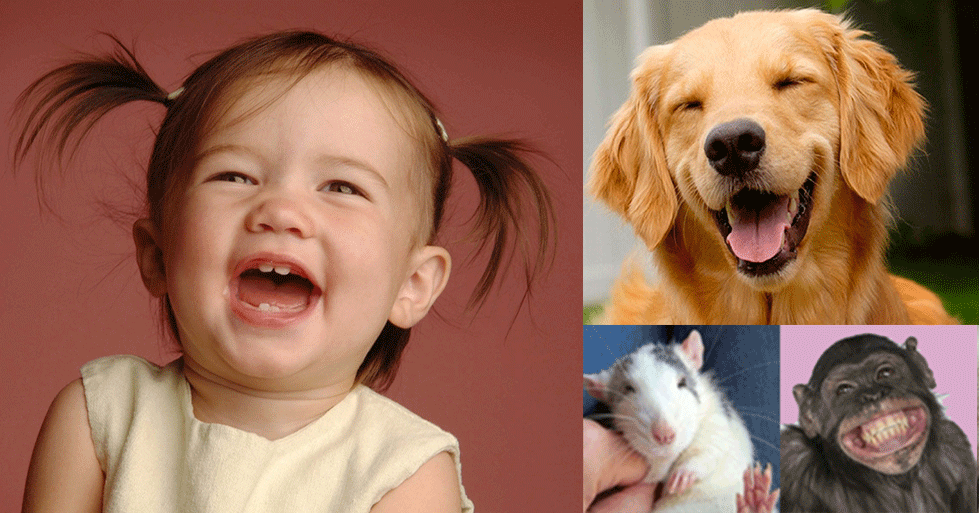Introduction |Etymology | Definition and Problems | The Altruism Paradox- Group selection—Wilson | Kin Selection—Maynard Smith | Reciprocal Altruism—Trivers | Genetic Selfishness—Dawkins | Phenotypic plasticity | An Example We All Know—Do Dogs Show Altruistic Behavior? | Conclusion and Perspectives
________
Altruism means unselfishness, selflessness, the regard for others as a principle (the opposite of egoism or selfishness). We all use the word in our daily language, feeling confident we know everything about altruism, its meaning, and implications, but do we? The concept poses many questions to biologists, philosophers, and other scientists. It has always done. For one, defining altruism isn’t as straightforward as the introductory paragraph above may seem to imply. Then, setting up a model where such behavior makes sense and can evolve without contradicting evolutionary theory has proven to be a real brain twister.
Etymology
Altruism derives from the French autrui = other people. Autrui developed from the Old French autre = other which itself comes from Latin alter = other. [1] Under the influence of alter, the French autrui produced the altrui- of the French altruisme and the English altruism. The English term has been in use since the mid-1800s. The translation of Auguste Comte (the French founder of the philosophical school of positivism), who coined the term for an antonym of egoism, [2] contributed to spreading its adoption in English.
Definitions and Problems
What is altruism? The vague definition of the term makes us doubt whether altruistic behavior is possible at all. Note that most synonyms of ‘altruism’ are not much more enlightening—also needing some explaining. If to be altruistic, the actor must get nothing at all in return for its actions, then we may question if any act qualifies as altruistic. Self-satisfaction always seems to follow a charitable act. Therefore, according to the theory of psychological egoism, we cannot describe sharing, helping, or sacrificing as altruistic. [3]
If we define altruism as unselfish conduct in the short term, i.e., without immediate benefit, then we can find more examples of such acts. One typical case is parental behavior. Parents do plenty for their progeny with no direct advantage to themselves. Female canine mothers, including our domestic dogs, Canis lupus familiaris, spend enough time and energy looking after their pups, feeding them, and teaching them various skills. [4] They regurgitate for them and defend them if they are in danger.
In the wild social canids, pack members also support caring for youngsters without immediate benefits. In jackals, Canis aureus—a group comprising father, mother, and cubs—when a juvenile is present (almost always, a sister to the newborn), she will help rear her younger sibling. [5].
However, note that some behavior we classify as altruistic may have a different and more plausible explanation. The case (in the Samburu National Park in Kenya) of a female lion adopting an oryx calf is more likely to result from a hormonal imbalance affecting its maternal instinct, than to altruism. [6]
Last, a problem of great concern, one that had preoccupied great minds in biology, is the ‘altruism paradox.’
Darwin well knew of that. He writes, “It is extremely doubtful whether the offspring of the more sympathetic and benevolent parents, or of those who were the most faithful to their comrades, would be reared in greater numbers than the children of selfish and treacherous parents belonging to the same tribe. He who was ready to sacrifice his life, as many a savage has been, rather than betray his comrades, would often leave no offspring to inherit his noble nature.” [7]
The Altruism Paradox
In explaining kin selection, evolutionary biologists imagine a gene that causes its bearer to behave altruistically toward other organisms and those without it to behave selfishly. “The altruists will be at a fitness disadvantage, so we should expect the altruistic gene to be eliminated from the population.” [8] That is, in a nutshell, the problem of altruism for the evolutionary scientist.
How can an altruistic gene, coding for the weaker altruistic phenotype, thrive in competition against a selfish one that codes for the fitter selfish phenotype? Hence, we have the altruism paradox. As we shall see, there might be a workaround this issue, but let us first review the traditional models.
Group Selection
Group selection is another proposed mechanism of evolution in which natural selection operates at the group level, instead of at the level of the individual [9][10].
Darwin, in “The Descent of Man” in 1871,[7] attempted to explain the evolution of human altruism as a selection process at the group level: “When two tribes of primeval man, living in the same country, came into competition, if (other things being equal) the one tribe included a great number of courageous, sympathetic and faithful members, who were always ready to warn each other of danger, to aid and defend each other, this tribe would succeed better and conquer the other.” [7]
Darwin’s explanation seems a tad non-Darwinian, thus revealing the magnitude of the problem.
A winner has no impact on evolution, per se, unless it has a better ‘Darwinian or inclusive fitness’ (the genetic contribution of an individual to the next generation’s gene pool relative to the average for the population). An altruist may win but if its ‘Darwinian and inclusive fitness’ is nil, altruism stops with it. If altruism survives, even though donors perish leaving no progeny, the survival of the fittest is not true for the fittest are those who leave the most copies of themselves in successive generations.
This issue has bothered many since Darwin, among them, Hamilton [11]. E. O. Wilson and D. S, Wilson write: ‘‘[…] something more than natural selection within single groups is required to explain how altruism and other group-advantageous traits evolve by natural selection.” [12]
For natural selection to favor altruism in a broader scenario, the ‘within-group’ disadvantage of the altruist must be offset by the ‘between-group’ advantage of the group including altruists. [13] ‘‘Cooperation is always vulnerable to exploitation by defectors; hence, the evolution of cooperation requires specific mechanisms, which allow natural selection to favor cooperation over defection.’’ [14][15]
For group selection to be viable, we must assume that the variation between groups is larger than the variation within groups. Since selection acts upon the phenotype, competition and selection can operate at all levels. Therefore, D. S. Wilson contends that “At all scales, there must be mechanisms that coordinate the right kinds of action and prevent disruptive forms of self-serving behavior at lower levels of social organization.”[16] He summarizes, “Selfishness beats altruism within groups. Altruistic groups beat selfish groups. Everything else is commentary.”[16]
As we shall see, not everyone agrees with that. ‘Between-group’ selection is possible, in principle, although it is weak compared to any which may happen ‘within-group’. Therefore, if we are to explain ‘for the good of the group’ behavior, then we must do it without group selection.
In fact, all models for explaining how cooperative and altruistic social behavior evolve, such as kin selection, reciprocity, and the selfish gene theory developed as alternatives to group selection.
Kin Selection
To explain altruism, we must find a way of natural selection to favor altruistic genes as in the theory of kin selection.[11] Kin selection is the evolutionary strategy that supports the reproductive success of an organism’s relatives at one’s cost. It is kin altruism based on inclusive fitness. Maynard Smith used the term ‘kin selection’ for the first time in 1964.[17]
Charles Darwin discussed this strategy in “The Origin of Species,” (1859)[18] arguing that a selection benefit to “the same stock” (kin) would allow the evolution of a trait while destroying an individual. Seventy years later, Fisher and Haldane figured out the mathematics of kin selection. [19][20] According to Maynard Smith, Haldane resumed the conclusion of his calculations by saying that, “he was prepared to lay down his life for eight cousins or two brothers.” [21]
Hamilton’s inclusive fitness rule states that kin selection increases the frequency of particular genes when the genetic relatedness of a recipient to a donor multiplied by the benefit to the recipient is greater than the reproductive cost to the donor.
rB>C
where r=the genetic relatedness of the recipient to the donor; B=the reproductive benefit gained by the recipient of the altruistic act; C=the reproductive cost to the donor.
Thus, kin selection is a special consequence of gene selection. The degree at which one should extend altruistic behavior toward others depends upon their coefficient of relationship. There are two ways to achieve this: (1) by kin recognition and/or (2) by living near one’s relatives (Hamilton 1964).
‘Kin selection’ is not the same as ‘group selection’ where a genetic trait may become widespread because it benefits the group as an entity.
Reciprocal Altruism
Reciprocal altruism is all behavior whereby a donor, with one act, reduces its fitness while increasing a recipient’s fitness, expecting subsequent payback. [22] Thus, the reduction is temporary. The mechanism is close to the “tit for tat” strategy in game theory.[23]
Reciprocal altruism, regarded as an instance of the prisoner’s dilemma, [24] is an evolutionary possibility if chances of meeting another reciprocal altruist are high enough, or if the game continues long enough.[22]
Reciprocal altruism, [22] is a possible way for natural selection to favor altruistic genes provided that:
(1) the individuals must have plenty of opportunities for reciprocation;
(2) they must be able to recognize each other as individuals;
(3) they must remember the obligations;
(4) and that they must be motivated to reciprocate.
Although this model seems to be evolutionarily unstable, evolutionary biologists found a way in which it would work.
There are striking parallels between altruistic behavior and exaggerated sexual ornaments. Both are costly in fitness and easy to detect, and both might be fitness signals turned evolutionarily stable by the handicap principle. The handicap principle suggests that honest communication is expensive to the signaler, therefore only affordable to special individuals. Receivers know that reliability must backup quality because lesser signallers couldn’t afford such extravagances. [25][26][27]
Then, we have the homogeneousness norm. Change in phenotype and functionality, caused by a non-silent mutation, will often stand out in a population. Thus, we can expect sexual individuals to prefer mates with the least number of unusual or minority features. As a result, and given enough time, a whole population will develop similar looks. In a similar way, the behavior repertoire of a population will become evolutionarily stable once it has developed as homogeneous as is the rule in most species. This includes any altruistic and cooperative features.[28]
Genetic Selfishness
When parents sacrifice themselves for their progeny, they are benefiting themselves since their offspring have 50% of their genes. Therefore, we can regard altruistic behavior as genetically selfish. That is Haldane’s extrapolation from ‘kin selection’.
For example, in wolves, Canis lupus lupus, [29] it pays off for each parent to sacrifice its life saving two of their progeny because this equals twice 50% of their own genes. However, such a calculation is more complicated than so if we take into account the cubs’ chances of survival without parental support. Giving their lives to save their youngsters when they are only one week old is a bad trade since they are unlikely to survive. In this instance, the best strategy is for the male and the female to protect themselves and keep the prospect of producing more offspring later.
This model explains why individuals sacrifice more for their progeny than for those of relatives or strangers, as we saw.[30] What the defenders of the selfish gene want to emphasize, besides agreeing with kin selection and inclusive fitness, is that the selection process happens at the gene level.[31][32]
In the genetic selfish model, the unit of replication is the gene, and the organism is the vehicle it uses and upon which selection acts directly. “Natural selection favours some genes rather than others not because of the nature of the genes themselves, but because of their consequences—their phenotypic effects.”[32]
Because genes are selfish, they will promote selfish behavior in the individuals they produce. ‘Selfish’ means, in this sense, to take care of itself as the first priority. Dawkins writes, “[…] gene selfishness will usually give rise to selfishness in individual behaviour. However, […] there are special circumstances in which a gene can achieve its own selfish goals best by fostering a limited form of altruism at the level of individual animals.”[32]
Gene selection soundly explains kin selection and eusociality. An organism acts altruistically, against its individual interests, because by supporting a related one to reproduce, genes help copies of themselves (or sequences with the same phenotypic effect) in other bodies to replicate. Thus, sometimes, ‘selfish’ actions by the genes lead to unselfish behavior by the organisms.
The survival of each gene, being replicators, depends on the survival of some others. Being a selfish gene does not imply that genes are entirely uncooperative. To be successful, a gene needs to cooperate with the other genes with which it shares a phenotype. Genes cooperate in building bodies because they all share the same exit route into the next generation. That’s their only way to survive. An organism, a body, is a vehicle for its genes, built up by a cooperative of genes.
Vehicles are important, but replicators are essential. Darwinian natural selection is still viable with no vehicles, only replicators, but not the other way around. In fact, when life began, there were probably no vehicles, only replicators.
A group is not a replicator because there is no ‘group pool’ (like there are ‘gene pools’). There is no metapopulation in which some groups are more successful than others at making replicas of themselves. And a group is not a vehicle because to qualify as one, all the genes in the same group would need to share the same exit route to the next group in the generational sequence.
Selection based upon groups is rare compared to selection on individuals, according to the selfish gene model. Researchers could not confirm simple interpretations of group selection, though more sophisticated ones proved to make accurate predictions in specific cases.[12]
E. O. Wilson writes that although the selfish-gene approach has been widely accepted “[…] Martin Nowak, Corina Tarnita, and I demonstrated that inclusive fitness theory, often called kin selection theory, is both mathematically and biologically incorrect.” He argues that group selection is a more realistic model of social evolution.[12][33[[34]
Dawkins rejects replacing ‘kin selection’ with ‘group selection.’ According to the selfish-gene model, viewing evolution as driven by the differential survival of whole groups of organisms is incoherent. He does not deny ‘group selection’. What he contends is that, even in the rare cases where it is not wrong, it is cumbersome, time-wasting, and distracting to what would otherwise be a straightforward understanding of what happens in natural selection.
Both Dawkins and Wilson agree that favorable genes are likely to prosper and replicate and that living in groups is helpful in some circumstances. The dispute arises mostly over definitions. They aim toward representing empirical facts with precision, but both use too broad definitions for ‘group,’ ‘group selection’ and ‘kin selection’. Thus, it becomes rather difficult to test their models.
We might find a consensus if we can simulate various evolutionary scenarios with narrower definitions, similar to what Markvoort et al. did for simulations of cellular group selection.[35]
A Workaround the Classic Approach
The altruism paradox, as we saw, goes down to the question: how can an altruistic gene, coding for the weaker altruistic phenotype, thrive in competition against a selfish one that codes for the fitter selfish phenotype?
Perhaps this is a confirmation that an answer cannot be better than the question it addresses. What if we are posing the wrong question and, hence, creating the paradox?
The thought of a distinct altruistic allele risking being overrun by a distinct selfish one is the basis for all the models we reviewed above.
As Dawkins writes, “‘cheat genes’ are spreading through the population while ‘sucker’ genes are driven to extinction.”[32] E. O. Wilson also summarized the problem in the same lines, “How might such a behavior evolve if the genes promoting it are at such a disadvantage in competition with genes that oppose it?” [36]
Now, suppose there are no two genotypes coding for the two competing phenotypes, selfishness and altruism. What if both phenotypes were due to one single genotype carrying both alternatives—no two distinct alleles? The Altruism Selfishness Plasticity (ASP) model suggests exactly that. Thus, let us for a moment set the prevailing Altruism Selfishness Allelomorphism (ASA) frame aside and explore what the ASP approach can add to the debate.
Altruistic and Selfish Phenotypes as Plastic Expressions of a Single Genotype
There is a way around the altruism paradox: to consider the altruistic and selfish phenotypes as plastic expressions of a single genotype. [37]
Phenotypic plasticity is the property of a genotype to produce different phenotypes in response to distinct environmental conditions.[38] There is nothing strange about that. We have known about phenotypic plasticity for quite a while. It denotes particular morphological and physiological changes in an organism—and behavior—as a response to a specific environment. Although biologists, to begin with, used the term to describe some developmental effects of a morphological character, they use it today to describe all phenotypic responses to environmental conditions, e.g., acclimatization and learning.[39]
In fact, we have plenty of data to support the ASP model. It is very plausible that no distinct genotype codes either the altruistic or the selfish phenotype, that they are rather plastic expressions of the same genotype, determined by particular environmental circumstances. And if this is true—the altruistic and selfish phenotypes being creations of a single genotype—then, they cannot be competing. To use Dawkins’ metaphor, the same genotype has the plasticity to express itself either as a ‘cheater’ or a ‘sucker’ depending on accidental contingencies.
Yakubu provides plenty of evidence in support of such a solution to the altruism paradox.[37] Let us review some of them.
The Social Hymenoptera
The social Hymenoptera are a favorite of biologists because they are highly social and haplodiploid. A honeybee, Apis mellifera, colony has three castes consisting of a queen, a few hundred males (drones), and thousands of non-reproductive females (workers). The queen’s role is to reproduce and the drone’s job is mating a queen. The workers, on the other hand, strive hard keeping the colony, foraging, and defending it from intruders. The reproductive queen is selfish, while the nonreproductive workers are perhaps the epitome of altruism.
Now, we can ask whether there are distinct alleles (genotypes) for altruism and selfishness in eusocial populations as the classical models of altruism presume. Evidence refutes that conclusively.
Whether a larva becomes a queen or a worker begins with where the egg is laid and continues with the received feeding.[40] The workers will nurse a larva in a queen cell with royal jelly.[41] On the other hand, if the larva is in a worker cell, they will feed it worker food. Amazingly enough, the former will become a queen and the latter a worker. We can say the eggs and the larva are totipotent [40] or multipotent (according to this author).
The honeybee provides us with even more staggering evidence. We can move eggs and larva from a queen cell to a worker cell, or the other way around, and if we do that within the first three days, they will develop as they are fed and as to where they reside.[40] We can thus infer that there is no genotype involved in the queen/worker distinction. Whether a bee becomes selfish (queen) or altruist (worker) depends only on environmental stimuli.
The caste differentiation happens via an epigenetic process where non-heritable factors contribute to gene expression. Queen and worker morphological forms both originate in the same genome. Royal jelly nourishment is the non-genetic determiner. The genes encoding the major royal jelly proteins present one of the clearest examples of a gene class acquiring new functions during the evolution of sociality.[42]
Researchers have sequenced the genome of the honeybee.[43] In fact, we know the particular genes in the honeybee whose differential expression results in queen and workers. Evans and Wheeler identified and characterized transcripts from seven genes that are expressed differently by the worker- and the queen-destined larvae at a critical point in their development. They are indeed genes with phenotypic plasticity.[44]
Altruistic Expression and Social Cues
Let us now consider non-eusocial social organisms. Trivers explained the Vampire bats altruistic behavior based on the ASA assumption.[22] However, we can explain that behavior as well without presuming the existence of distinct selfish/altruistic genotypes.
In vampire bats, hungry individuals often solicit food from those that are better fed. Sometimes, an individual obliges and regurgitates to a soliciting individual—and, sometimes, it steadfastly refuses to share food.
Trivers is right as to the reciprocity of this altruistic behavior. Whether a vampire bat shares blood depends on whether the solicitor has given the donor blood earlier or is likely to give blood to the donor later.[45] The same individual behaves selfish and altruistic depending on social circumstances. This conclusion is compatible with reciprocal altruism.[37] However, as genotypes do not change overnight, it is more plausible for the distinct phenotypes to be due to the plasticity of the same allele.
Male adult olive baboons, Papio anubis, help troupe members depending on whether he has earlier received help from those individuals or they are deemed likely of lending him help in the future.[46]
The behavioral strategy of efficient coercion also supports the plastic phenotypic deployment of a single genotype. In ten studied social insect species, social sanctions kept individuals altruistic in situations where they would have been selfish (Wenseleers and Ratnieks 2006).[47]
Altruists can become selfish. In white-fronted bee-eater, Meropsis bullockoides, young males do not set up nests because older males harass them. They become altruistic helpers instead. However, some of these helpers turn selfish once they build their own nests.[48]
In meerkat societies, the altruistic lower-ranking females become selfish if they attain a higher ranking, not only by breeding but also by killing the infants of other (by then) subordinate females.[49]
Social organisms may assume subordinate roles, not because of their altruistic genes, but because it is the best of the options, they have at the time.[50]
The reviewed examples seem to confirm the hypothesis of altruism being due to a single genotype with plastic phenotype options. An individual will behave altruistically under particular environmental conditions and will respond selfishly when those same cues are absent. As far as this author knows, no evidence has yet proved that only certain individuals can react altruistically or selfishly, given they act in the same scenario.[37]
An Example We All Know—Do Dogs Show Altruistic Behavior?
We know dogs for teaming together against rivals. That is widespread territorial behavior among pet dogs, strays and wild canids. They also defend their household, including humans and other animals. The females bring up and protect their pups at their own expense. These are all examples of behavior we can classify as altruistic. Even considering the difficulties inherent to the concept of altruism, we described, a prudent statement would be that dogs show reciprocal altruistic behavior under the right circumstances, as the ASP model describes.
Conclusion and Perspectives
The altruism paradox is perhaps among the most interesting in ethology (biology) and has, therefore, preoccupied many researchers. It poses highly pertinent questions to enhance our understanding of behavior, genetics and evolutionary theory. Scientists have proposed various models, some of which are more consensually accepted than others. Still, they have all contributed to increasing our global knowledge. The application of the ASP model to behavior promises perspectives far beyond the one we studied in this paper. Perhaps other behaviors that conventional approaches ascribe to distinct phenotypes are but phenotypic plastic expressions of a genotype.
References
[1] “Altruism.” Merriam-Webster. Merriam-Webster, Incorporated. 2017. Retrieved 2017-10-10.
[2] Altruism, Based on the Random House Dictionary (2017). Dictionary.com Unabridged. Random House, Inc. 2017. Retrieved 2017-10-10.
[3] Slote, M.A. 1964. An Empirical Basis for Psychological Egoism, Journal of Philosophy 61: 530-537. Retrieved: 2017-10-10.
[4] Fox, M.W. 1972. Behaviour of Wolves, Dogs, and Related Canids. Harper & Row. ISBN 978-0060113216.
[5] Rogers, L.J.; Kaplan, G.T. 2003. Spirit of the Wild Dog: The World of Wolves, Coyotes, Foxes, Jackals & Dingoes. Allen & Unwin. ISBN 1865086738.
[6] “An amazing True Story—1/24/2008“. The David Sheldrick Wildlife Trust. 2008. Retrieved 2017-10-10.
[7] Darwin, C. 1871. The Descent of Man, and Selection in Relation to Sex (1st ed. ed.). London: John Murray. ISBN 0-8014-2085-7.
[8] Okasha, S. 2009. Biological altruism. In: Zalta EN (ed) The Stanford encyclopedia of philosophy, winter 2009 edn.
[9] Wynne-Edwards, V.C. 1962. Animal Dispersion in Relation to Social Behaviour. Edinburgh: Oliver & Boyd.
[10] Lorenz, K. 1963. Das sogenannte Böse zur Naturgeschichte der Aggression. Verlag Dr. G Borotha-Schoeler (“So-Called Evil, Toward a Natural History of Aggression”).
[11] Hamilton, W.D. 1964. The genetical evolution of social behaviour, I and II. Journal of Theoretical Biology. 7: 1–16, 17–32. doi:10.1016/0022-5193(64)90038-4.
of sociobiology. Q Rev Biol 82:327–348.
[13] Taylor, C., Nowak, M.A. 2007. Transforming the dilemma. Evolution, 61(10):2281–2292.
[14] Allen, B., Traulsen, A., Tarnita, C.E., Nowak, M.A. 2012. How mutation affects evolutionary games on graphs. J Theor Biol 299:97–105.
[15] Nowak, M.A. 2012. Evolving cooperation. J Theor Biol 299:1–8.
[16] Wilson, D.S. 2015. Does Altruism Exist? Culture, Genes, and the Welfare of Others. Yale UP. ISBN: 0300189494.
[17] Maynard Smith, J. 1964. Group selection and kin selection. Nature. 201 (4924): 1145–1147. doi:10.1038/2011145a0.
[18] Darwin, C. 1859. The Origin of Species. Reprint: Modern Library, New York 1998.
[19] Fisher, R. 1930. The Genetical Theory of Natural Selection. The Clarendon Press Oxford. OCLC: 18500548.
[21] 1976 July 29, New Scientist, Section: Letters, Haldane, (Letter to the editor from J. Maynard Smith), Quote Page 247, Column 1 and 2, Published by New Science Publications, London; Now Published by Reed Business Information, UK.
[22] Trivers, R. L. 1971. The evolution of reciprocal altruism. Quarterly Review of Biology. 46: 35–57. doi:10.1086/406755.
[23] Rapoport, A. 1966, Two-Person Game Theory: The Essential Ideas. The University of Michigan Press. Ann Arbor, MI,
[24] Mérő, L. 1998. The Prisoner’s Dilemma. In: Moral Calculations. Springer, New York, NY. https://doi.org/10.1007/978-1-4612-1654-4_3.
[25] Fisher, R. 1930. The Genetical Theory of Natural Selection. The Clarendon Press Oxford. OCLC: 18500548.
[26] Zahavi, A. 1975. Mate selection—a selection for a handicap. Journal of Theoretical Biology. 53 (1): 205–214. PMID 1195756. doi:10.1016/0022-5193(75)90111-3.
[27] Zahavi, A. 1977. The cost of honesty (Further remarks on the handicap principle). Journal of Theoretical Biology. 67 (3): 603–605. doi:10.1016/0022-5193(77)90061-3.
[28] Koeslag, J.H. 1997. Sex, the Prisoner’s Dilemma Game, and the evolutionary inevitability of cooperation. Journal of Theoretical Biology. 189: 53–61. PMID 9398503. doi:10.1006/jtbi.1997.0496.
[29] Mech, L.D.; Boitani, L. 2010. Wolves: Behavior, Ecology, and Conservation. Chicago: University of Chicago Press. ISBN 0226516989.
[30] Abrantes, R. 2015. Ethology—The Study of Animal Behavior in the Natural Environment. Cambridge: Wakan Tanka Publishers.
[31] Williams, G.C. 1966. Adaptation and Natural Selection: a Critique of Some Current Evolutionary Thought. Princeton: Princeton University Press.
[32] Dawkins, R. 1976. The Selfish Gene. Oxford: Oxford University Press (1989). pp. 183–185. ISBN 0192860925.
[33] Nowak, M. A.; Tarnita, C. E.; Wilson, E. O. 2010. The evolution of eusociality. Nature. 466 (7310): 1057–1062. doi:10.1038/nature09205. ISSN 1476-4687.
[34] Wilson, E.O. 2012. The Social Conquest of Earth. Liveright. ISBN-10: 978-0871403636/0871403633.
[35] Markvoort, A.J.; Sinai, S., Nowak, M.A.. 2014. Computer simulations of cellular group selection reveal mechanism for sustaining cooperation. Journal of Theoretical Biology 357 (2014) 123–133.
[36] Wilson, E.O. 2005. Kin selection as the key to altruism: its rise and fall. Soc Res 72:159–166.
[37] Yakubu, Y. 2013. The Altruism Paradox: A Consequence of Mistaken Genetic Modeling. Biol Theory (2013) 8:103–113 DOI 10.1007/s13752-013-0120-4.
[38] Pigliucci, M. 2001. Phenotypic Plasticity: Beyond Nature and Nurture. Johns Hopkins University Press, Baltimore.
[39] Kelly, S.A., Panhuis, T.M., Stoehr, A.M. 2012. Phenotypic Plasticity: Molecular Mechanisms and Adaptive Significance. Comprehensive Physiology. pp. 1417–39. doi:10.1002/cphy.c110008. ISBN 978-0-470-65071-4. PMID 23798305.
[40] Winston, M.L. 1987. The Biology of the Honeybee. Harvard University Press, Cambridge, MA.
[41] Prete, F.R. 1990. The conundrum of the honey bees: one impediment to the publication of Darwin’s theory. J Hist Biol 23:271–290.
[42] Albert, S., Bhattacharya, D., Klaudiny, J., Schmitzova, J. & Simuth, J. 1999. The family of major royal jelly proteins and its evolution. J. Mol. Evol. 49, 290– 297.
[43] HGSC The Honeybee Genome Sequencing Consortium. 2006. Insights into social insects from the genome of the honeybee Apis mellifera.
Nature, 443, pages 931–949 (2006)
[44] Evans, J.D., Wheeler, D.E. 1999. Differential gene expression between developing queens and workers in the honey bee, Apis mellifera.
Proc Natl Acad Sci USA 96:5575–5580.
[45] Wilkinson, G.S. 1984. Reciprocal food sharing in the vampire bat. Nature 308:181–184.
[46] Packer, C. 1977. Reciprocal altruism in olive baboons. Nature 265:441–443.
[47] Wenseleers T., Ratnieks, F.L.W. 2006. Enforced altruism in insect societies. Nature 444:50.
[48] Emlen, S.T., Wrege, P.H. 1992. Parent–offspring conflict and the recruitment of helpers among bee-eaters. Nature 356:331–333.
[49] Young, J.A., Clutton-Brock, T. 2006 Infanticide by subordinates influences reproductive sharing in cooperatively breeding meerkats. Biol Lett 2:385–387.
[50] Gadagkar, R. 1997. Survival strategies: cooperation and conflict in animal societies. Harvard University Press, Cambridge, MA.
Featured illustration: Anton Antonsen.
Featured Course of the Week
The 20 Principles Animal training is a craft: half science and half art. This course and the included online book give you the 20 indispensable principles you must know to become a skilled animal trainer. It is the best crash course in animal training one can wish for.
Featured Price: € 148.00 € 98.00
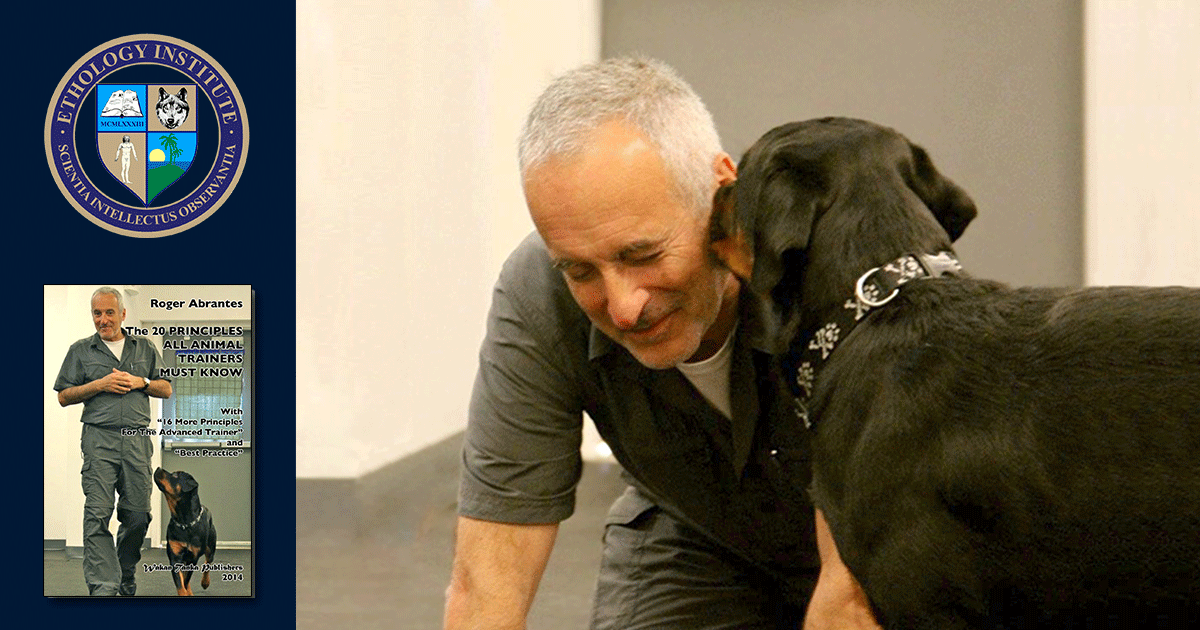
Learn more in our course Ethology. Ethology studies the behavior of animals in their natural environment. It is fundamental knowledge for the dedicated student of animal behavior as well as for any competent animal trainer. Roger Abrantes wrote the textbook included in the online course as a beautiful flip page book. Learn ethology from a leading ethologist.


